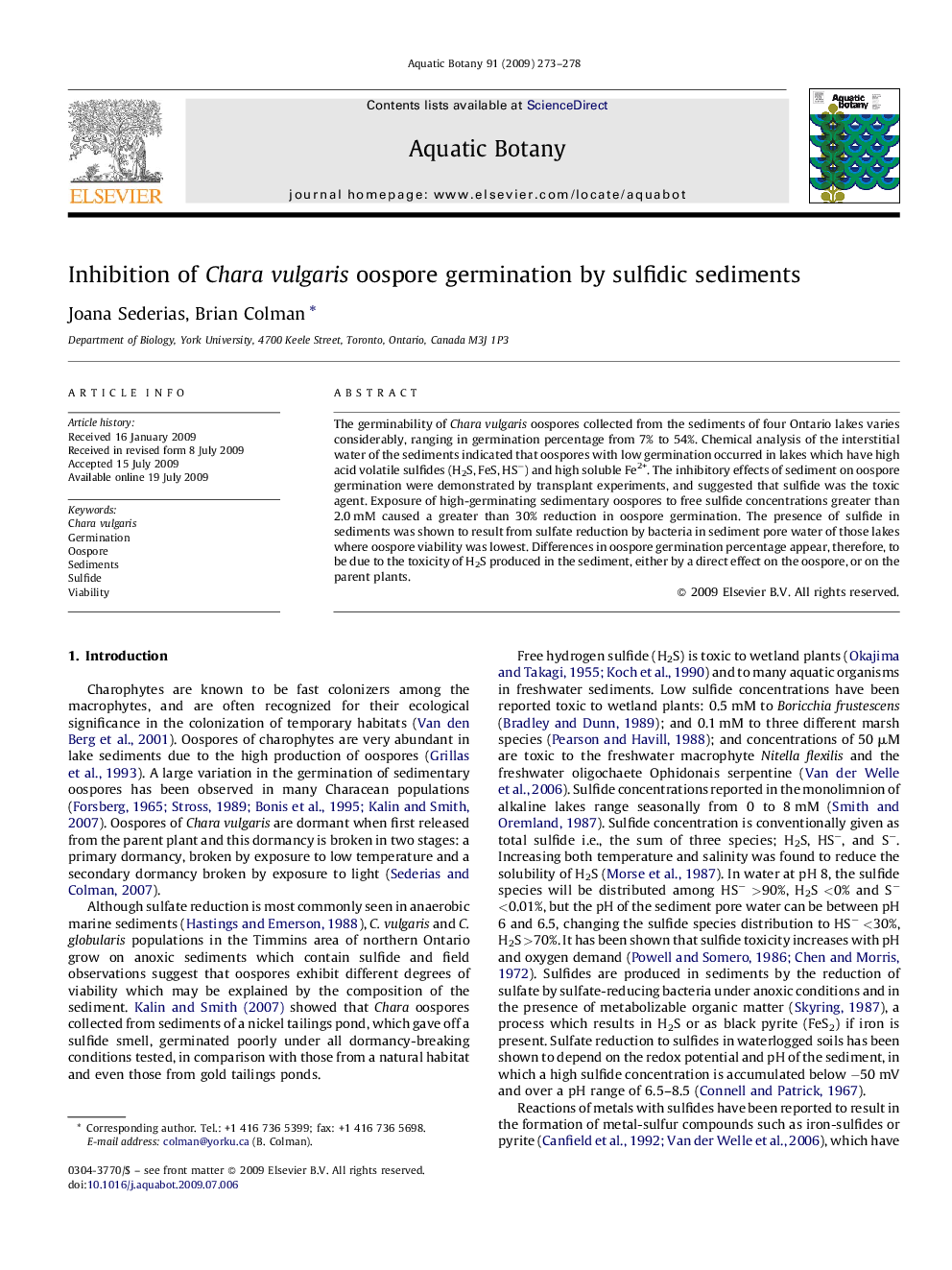| Article ID | Journal | Published Year | Pages | File Type |
|---|---|---|---|---|
| 4528371 | Aquatic Botany | 2009 | 6 Pages |
Abstract
The germinability of Chara vulgaris oospores collected from the sediments of four Ontario lakes varies considerably, ranging in germination percentage from 7% to 54%. Chemical analysis of the interstitial water of the sediments indicated that oospores with low germination occurred in lakes which have high acid volatile sulfides (H2S, FeS, HSâ) and high soluble Fe2+. The inhibitory effects of sediment on oospore germination were demonstrated by transplant experiments, and suggested that sulfide was the toxic agent. Exposure of high-germinating sedimentary oospores to free sulfide concentrations greater than 2.0Â mM caused a greater than 30% reduction in oospore germination. The presence of sulfide in sediments was shown to result from sulfate reduction by bacteria in sediment pore water of those lakes where oospore viability was lowest. Differences in oospore germination percentage appear, therefore, to be due to the toxicity of H2S produced in the sediment, either by a direct effect on the oospore, or on the parent plants.
Related Topics
Life Sciences
Agricultural and Biological Sciences
Aquatic Science
Authors
Joana Sederias, Brian Colman,
